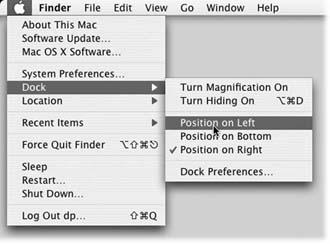The iLife programs may be simple, but they’re not simplistic. They offer a wide range of powerful, flexible features that let you create music, movies, pictures, and DVDs worthy of professional work. Unfortunately, many of the best techniques aren’t covered in the only “manual” you get with iLife—its sparse electronic help screens.
This book is designed to serve as the iLife manual, as the book that should have been in the box. It explores each program in depth, offers shortcuts and workarounds, and unearths features that the online help doesn’t even mention.
iLife ’04: The Missing Manual is divided into six parts. The first five correspond to the iLife programs: iTunes, iPhoto, iMovie, iDVD, and GarageBand. At the end of the book, you’ll find troubleshooting chapters that correspond to those programs.
Throughout this book, and throughout the Missing Manual series, you’ll find sentences like this one: “Open your Home → Library → Preferences folder.” That’s shorthand for a much longer instruction that directs you to open three nested folders in sequence, like this: “In the Finder, choose Go → Home. In your Home folder, you’ll find a folder called Library. Open that. Inside the Library window is a folder called Preferences. Double-click to open it, too.”
Similarly, this kind of arrow shorthand helps to simplify the business of choosing commands in menus, as shown in Figure I-5.
At http://www.missingmanuals.com, you’ll find news, articles, and updates to the books in this series.
But if you click the name of this book and then the Errata link, you’ll find a unique resource: a list of corrections and updates that have been made in successive printings of this book. You can mark important corrections right into your own copy of the book, if you like.
In fact, the same page offers an invitation for you to submit such corrections and updates yourself. In an effort to keep the book as up-to-date and accurate as possible, each time we print more copies of this book, we’ll make any confirmed corrections you’ve suggested. Thanks in advance for reporting any glitches you find!
In the meantime, we’d love to hear your suggestions for new books in the Missing Manual line. There’s a place for that on the Web site, too, as well as a place to sign up for free email notification of new titles in the series.
Get iLife '04: The Missing Manual now with the O’Reilly learning platform.
O’Reilly members experience books, live events, courses curated by job role, and more from O’Reilly and nearly 200 top publishers.


